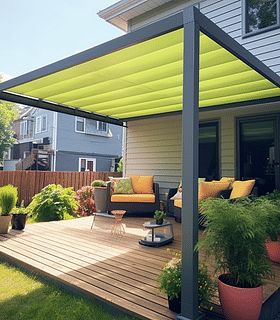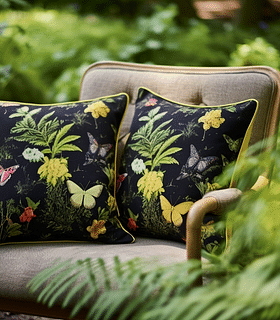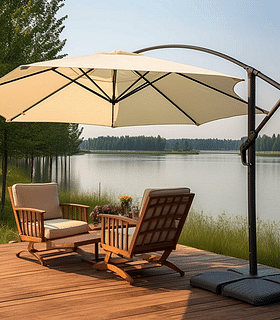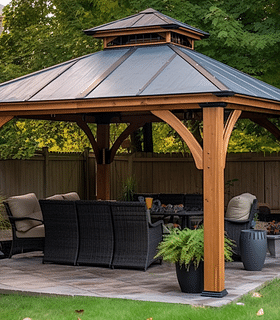The Long Winter: How to Store Your Outdoor Furniture
Discover the best ways to store your outdoor furniture during the winter to ensure it's ready for use come spring.

Winter is quickly approaching, which means it's time to start thinking about storing your outdoor furniture. Many people make the mistake of leaving their furniture outside during the winter months, and unfortunately, this can lead to damage and a shorter lifespan for their beloved pieces.
In this blog post, we'll take you through the best ways to store your outdoor furniture during the winter, so you can ensure it's ready for use come spring.
Why is storing your furniture important?
Leaving your furniture outside during the winter months can cause it to become damaged and weather-worn. Snow and ice can damage the material of your furniture, causing it to deteriorate and fade. Additionally, exposure to the elements can cause rust and decay on metal pieces, further reducing their lifespan.
Investing time and effort into properly storing your outdoor furniture during the winter can help maintain its quality and beauty, ensuring you're able to enjoy it for years to come.
How to store your furniture
Step 1: Clean your furniture
Before storing your furniture away for the winter, it's important to give it a thorough clean. This will help remove any dirt or debris that may have accumulated during the summer months, which can cause damage if left for long periods of time.
Step 2: Consider the type of furniture
Different types of outdoor furniture will require different storage techniques. For wooden furniture, it's important to keep it dry and out of direct sunlight. Covering with a tarp or protective covering is often a good idea, as it will prevent any moisture from getting in.
Metal furniture should be stored in a dry place to prevent rust. Applying a rust protector before storage can also help protect the furniture from the elements.
Step 3: Store your furniture in a dry place
Finding a dry place to store your furniture is key to ensuring its longevity. This could be a garage, shed, or other covered area that provides protection from the elements.
Step 4: Cover your furniture
Covering your furniture can provide extra protection during the storage process. Be sure to use a breathable cover that will allow air to circulate, as this will help prevent mold and mildew from forming.
Step 5: Check on your furniture periodically
During the winter months, it's a good idea to periodically check on your furniture to make sure it's still in good shape. This can help you catch any potential damage or issues before they become serious problems.
Conclusion
Properly storing your outdoor furniture during the winter months is an important part of ensuring its longevity. By following the steps outlined in this blog post, you can help protect your furniture and ensure it's ready for use come spring.
Trending products
Shop outdoor accessoriesFrequently asked questions
- Why is it important to store outdoor furniture during the winter months?
- Storing outdoor furniture during the winter months protects it from the harsh weather elements, preventing damage and extending its lifespan.
- What's the best way to clean outdoor furniture before storing it?
- Clean outdoor furniture thoroughly before storing it. Use a mild detergent and warm water to wash the furniture, and rinse it well to remove debris.
- Where should I store my outdoor furniture when I'm not using it?
- When not in use, store outdoor furniture in a dry, protected area such as a garage or garden shed. Keep the furniture off the ground and covered with a protective tarp.
- What materials should I use to cover my outdoor furniture?
- Use a waterproof, breathable cover made specifically for outdoor furniture. These covers keep the moisture and debris out, while still allowing air to circulate to prevent mildew.
- How often do I need to check on my stored outdoor furniture?
- Check on your stored outdoor furniture at least once a month to ensure the covers are in place and there are no signs of mildew or pests.
- Can outdoor furniture be left outside during the winter?
- While some outdoor furniture is designed to withstand winter weather, it's still best to store it during the winter months to protect it from potential damage.
- Should I disassemble my outdoor furniture before storing it?
- If possible, disassemble your outdoor furniture before storing it to save space and make it easier to store. Keep the hardware and screws in a clearly labeled bag for easy reassembly in the spring.
- Should I oil or treat my outdoor furniture before storing it?
- Depending on the type of outdoor furniture, applying oil or a protectant can help extend its lifespan. Be sure to read the manufacturer's instructions before doing so.
- How can I prevent mildew from forming on my stored outdoor furniture?
- To prevent mildew from forming on stored outdoor furniture, be sure to clean it thoroughly before storing it. Also, make sure the area where it's stored is dry and properly ventilated.
- How can I best protect my outdoor furniture from pests when storing it?
- To protect outdoor furniture from pests when storing it, use pest repellent products, such as mothballs or cedar chips. Be sure to evenly distribute these products throughout the storage area.
Are you looking for more ideas?
Have a look at these other guides about improving your garden and patio to create your dream outdoor space!
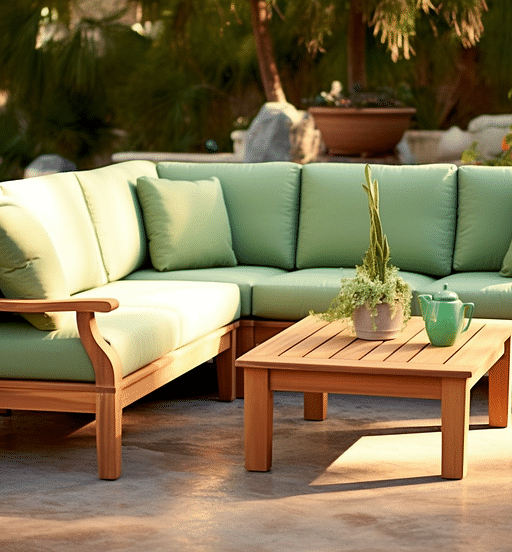
Are you looking for more ideas?
-
- Role
- Maintenance Tips for Your Outdoor Teak Furniture
- Description
- Learn how to clean and care for your outdoor teak furniture to preserve its beauty and longevity.
-
- Role
- Caring for Outdoor Wicker Furniture: Tips and Tricks
- Description
- Get tips and tricks for cleaning and protecting your outdoor wicker furniture from the elements.
-
- Role
- How to effectively clean a vinyl fence - Expert Tips!
- Description
- Discover expert tips on effectively cleaning a vinyl fence! Learn the step-by-step process and essential tools needed to keep your vinyl fence looking as good as new. Read our latest blog post for all the details and additional tips on fence maintenance.
-
- Role
- How to Clean Patio Screen Enclosures
- Description
- Discover effective tips and techniques for cleaning patio screen enclosures. Keep your outdoor space pristine with our expert advice.
